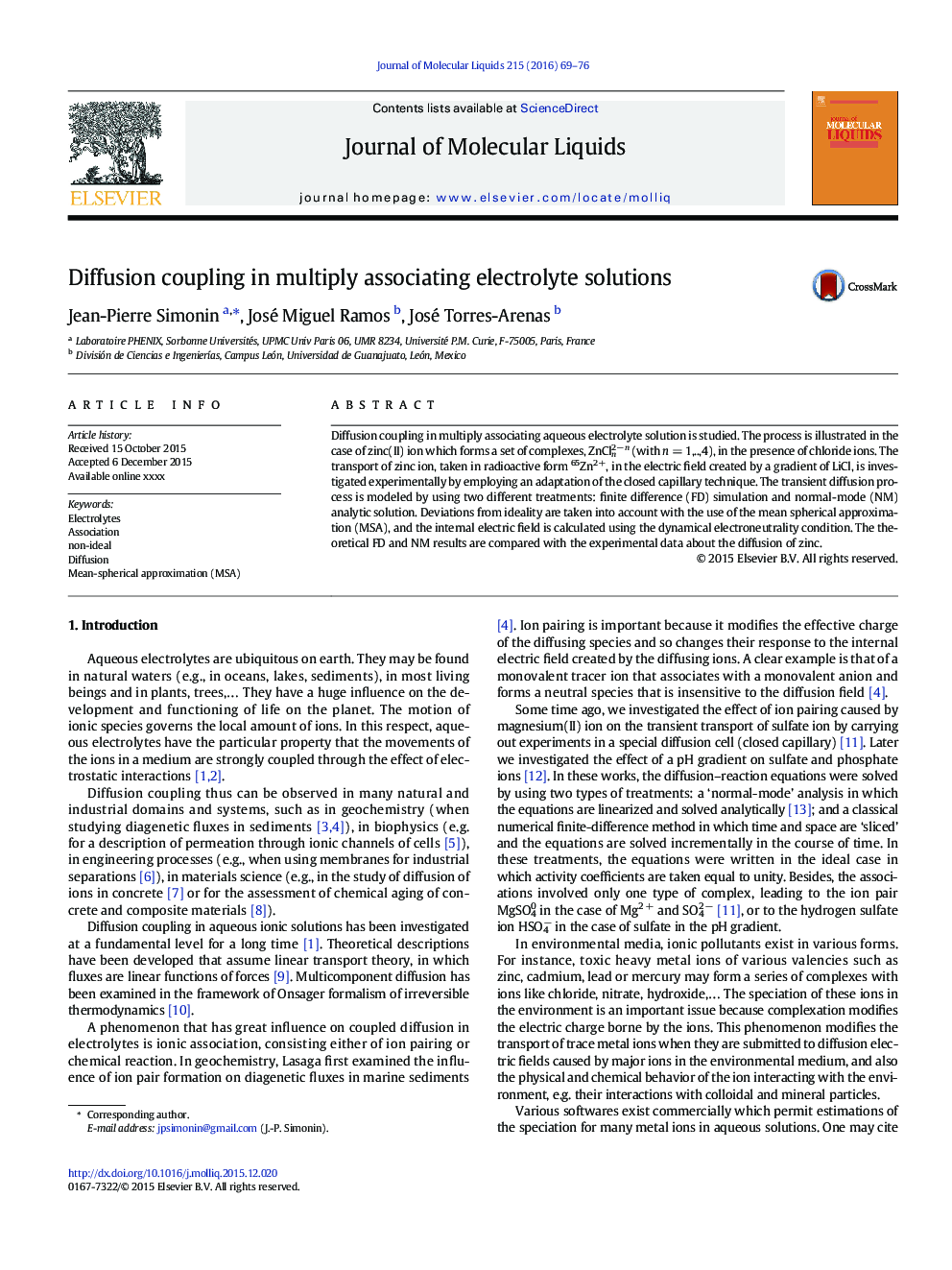| Article ID | Journal | Published Year | Pages | File Type |
|---|---|---|---|---|
| 5410279 | Journal of Molecular Liquids | 2016 | 8 Pages |
Abstract
Diffusion coupling in multiply associating aqueous electrolyte solution is studied. The process is illustrated in the case of zinc(II) ion which forms a set of complexes, ZnCln2ân (with n = 1,..,4), in the presence of chloride ions. The transport of zinc ion, taken in radioactive form 65Zn2+, in the electric field created by a gradient of LiCl, is investigated experimentally by employing an adaptation of the closed capillary technique. The transient diffusion process is modeled by using two different treatments: finite difference (FD) simulation and normal-mode (NM) analytic solution. Deviations from ideality are taken into account with the use of the mean spherical approximation (MSA), and the internal electric field is calculated using the dynamical electroneutrality condition. The theoretical FD and NM results are compared with the experimental data about the diffusion of zinc.
Related Topics
Physical Sciences and Engineering
Chemistry
Physical and Theoretical Chemistry
Authors
Jean-Pierre Simonin, José Miguel Ramos, José Torres-Arenas,
